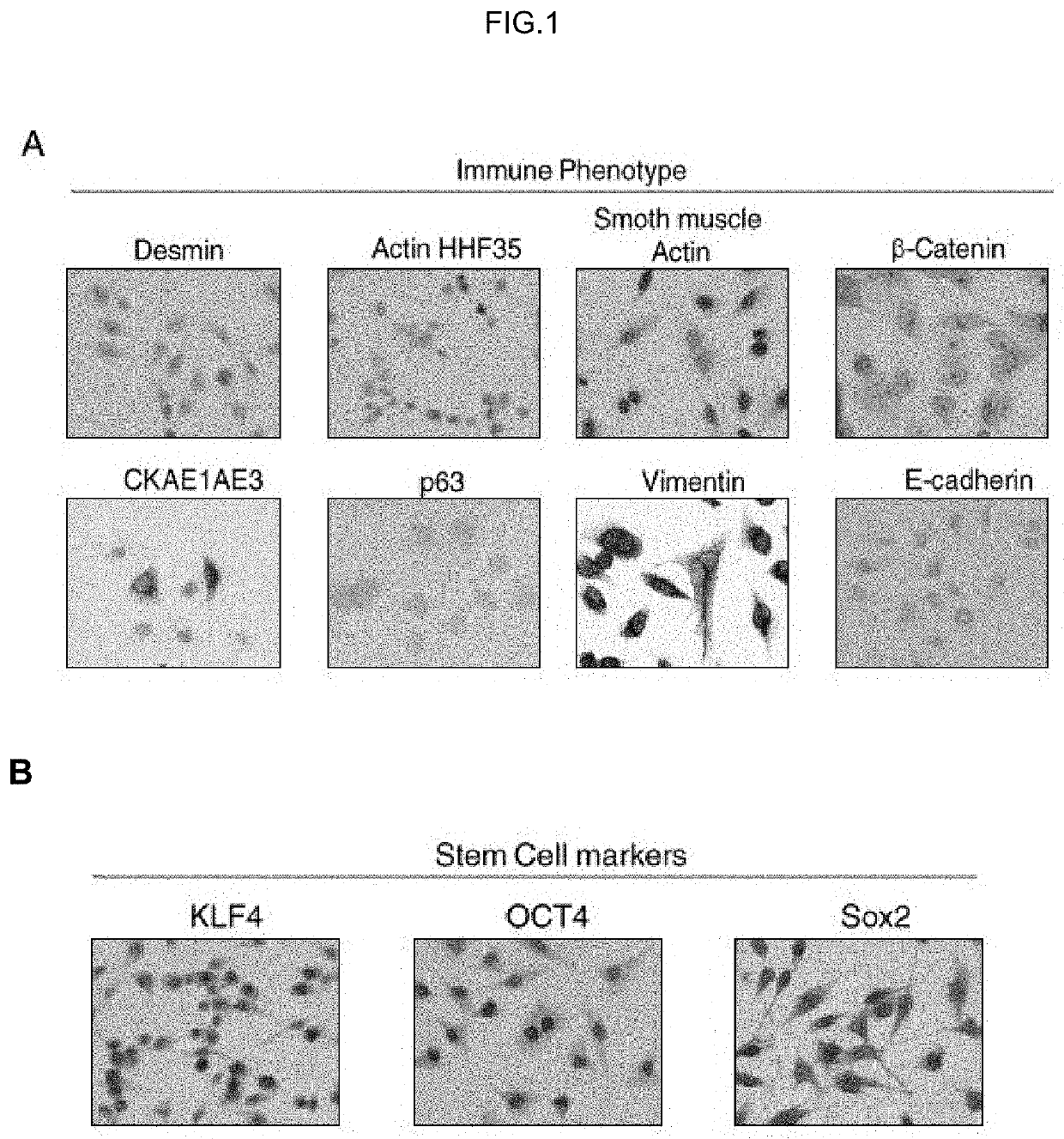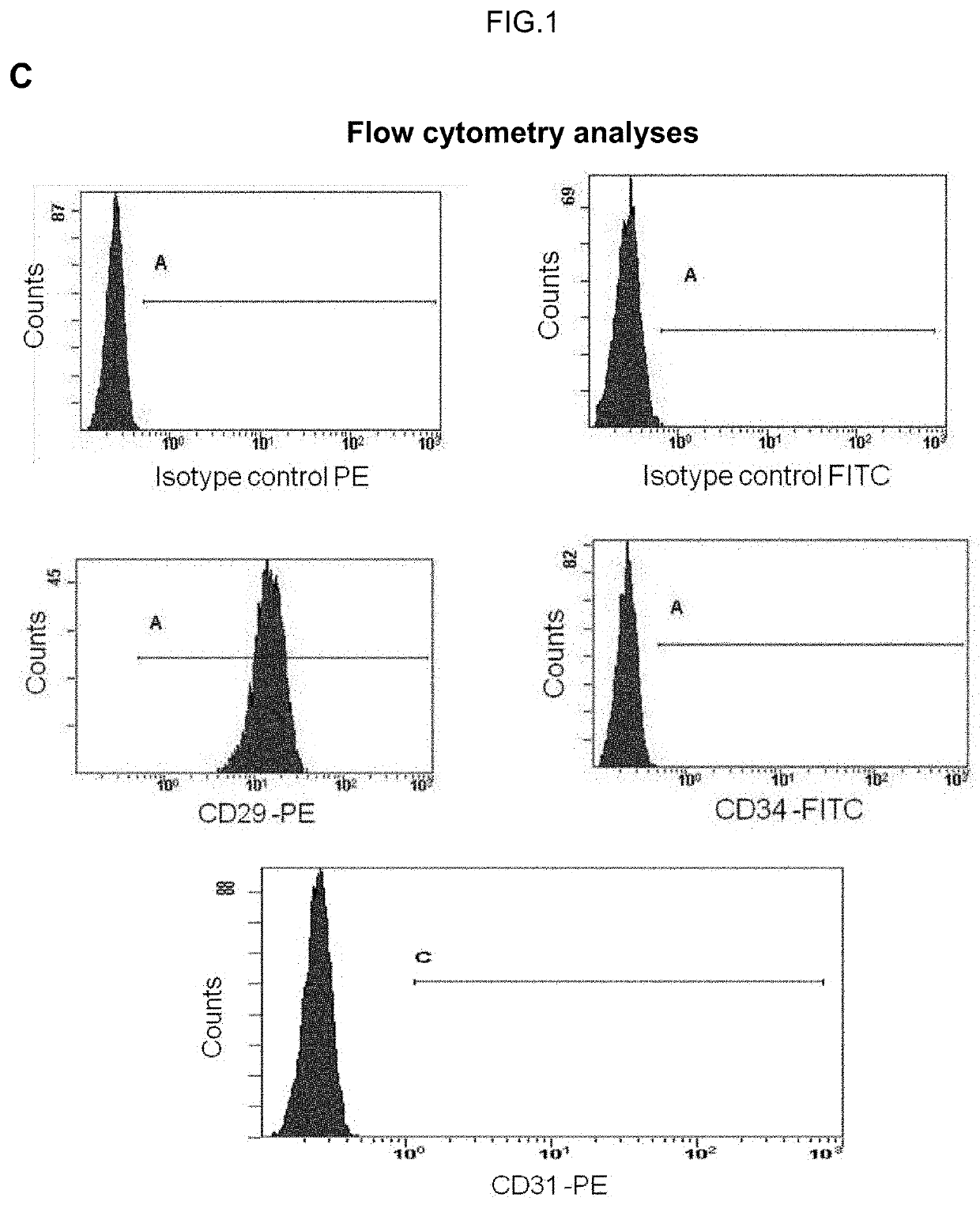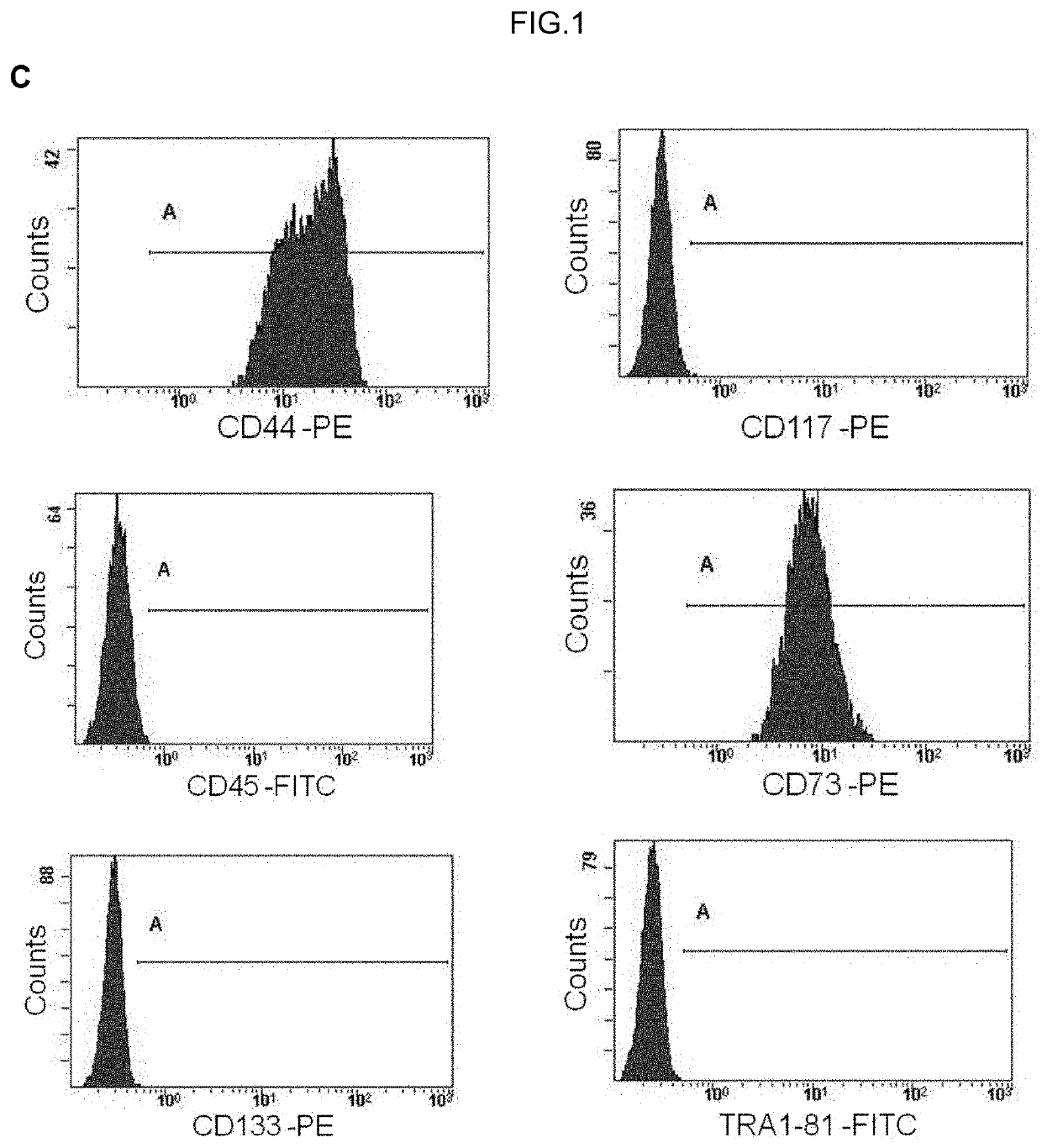Human uterine cervical stem cell population and uses thereof
a human uterine cervical and stem cell technology, applied in the field of human uterine cervical stem cell population, can solve the problems of inability to identify and unequivocally distinguish between different multipotent cell types obtained from soft tissue, inability to obtain a substantially pure population, and high invasive procedure for harvesting bm and adipose tissu
- Summary
- Abstract
- Description
- Claims
- Application Information
AI Technical Summary
Benefits of technology
Problems solved by technology
Method used
Image
Examples
example 1
Isolation and Characterization of Human Uterine Cervical Stem cells
[0143]I—Material and Methods
[0144]Isolation and Growth of Human Uterine Cervical Stem Cells
[0145]Human uterine cervical stem cells (hUCESCs) were obtained from an exfoliation of the uterine cervix during routine gynaecological examination. Briefly, cytological sample was enzymatically disaggregated with trypsin, collagenase or other enzyme which can disaggregate the cervical mucus. Then, the sample was centrifuged 5 minutes at 400 g and the pellet was collected and seeded in a culture plate. The well can be previously coated with 1% gelatin or fibronectin or other substrate to allow the adherence. Sample was culture in Dulbecco's Modified Eagle Medium: Nutrient Mixture F-12 (DMEM-F12), glutamine, with or without antibiotics, with serum, epidermal growth factor (EGF), hydrocortisone, insulin, non-essential amino acids, sodium pyruvate. The subculture of cells was carried out with trypsin or accutase or other proteolyt...
example 2
Inflammation Related Experiments
[0161]I—Material and Methods
[0162]Immunogenicity Assay
[0163]The one-way mixed lymphocyte reaction (MLR) assay was used to determine the immunogenicity of human uterine cervical stem cells (hUCESCs). The MLR was performed in 96-well microtiter plates using RPMI 1640 medium without FBS. Peripheral blood mononuclear cells (PBMC) derived from two different donors were plated at 2×105 cells per donor per well. Different donors were used to maximize the chance that at least one of PBMC was a major mismatch to the hUCESCs test cells. Stimulator cells used in the assay included autologous PBMC (baseline response), allogeneic PBMC (positive-control response), and hUCESCs cell population. Stimulator cells were mitomycin C treated prior to being added to the culture wells (2×104 cells per well, 10% stimulators cells). Additional controls cultures consisted of PBMC plated in medium alone (no stimulator cells), concanavalin A (ConA) stimulated PBMC and of hUCESCs ...
example 3
Cancer Related Experiments
[0173]I.—Materials and Methods
[0174]Cell Cultures
[0175]MCF-7 and MDA-MB-231 cells (human breast adenocarcinoma cell lines) were obtained from the European Collection of Cell Cultures (Salisbury, Wilts., UK) and HT29 (colorectal adenocarcinoma cell line) and AGS (gastric adenocarcinoma cell line) were obtained from the American Type Culture Collection (ATCC, Manassas, Va., USA). These cell lines were grown in 90-mm Petri dishes in DMEM supplemented with 10% FBS, 100 U / mL penicillin and 100 μg / mL streptomycin in an air-CO2 (95:5) atmosphere at 37° C. Confluent cells were washed twice with phosphate-buffered saline and harvested by a brief incubation with trypsin-EDTA solution (Sigma-Aldrich, St. Louis, Mo., USA) in PBS. Human cervical uterine stem cells (hUCESCs, obtained as above described), primary cultures from human breast tumours, and human adipose-derived stem cells (ASCs, StemPro®, Invitrogen), were grown in 90-mm Petri dishes in DMEM-F12 (1:1) supplem...
PUM
| Property | Measurement | Unit |
|---|---|---|
| thick | aaaaa | aaaaa |
| pH | aaaaa | aaaaa |
| wavelength | aaaaa | aaaaa |
Abstract
Description
Claims
Application Information
 Login to View More
Login to View More - R&D
- Intellectual Property
- Life Sciences
- Materials
- Tech Scout
- Unparalleled Data Quality
- Higher Quality Content
- 60% Fewer Hallucinations
Browse by: Latest US Patents, China's latest patents, Technical Efficacy Thesaurus, Application Domain, Technology Topic, Popular Technical Reports.
© 2025 PatSnap. All rights reserved.Legal|Privacy policy|Modern Slavery Act Transparency Statement|Sitemap|About US| Contact US: help@patsnap.com



